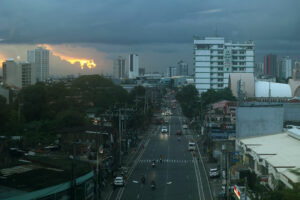THE economy’s 2025 expansion is expected to top 6% in 2025, Banco de Oro Unibank Inc. (BDO) said, with the Bank of the Philippine Islands (BPI) giving a 6.3% estimate for gross domestic product.
At the 9th Joint Economic Briefing organized by European chambers, BDO Investor Relations Group Senior Vice-President Dante Tinga, Jr. said he expects tempered inflation and lower interest rates boosting investment and consumption, noting that the private sector has had four years of subdued capital expenditure (capex) activity.
“Investments and consumption are picking up. And we believe that corporates that have held back on capex the past four years will resume capex spending, and that should push up Philippine GDP (gross domestic product) to over 6% in 2025,” Mr. Tinga said.
In a note, BPI Lead Economist Emilio S. Neri, Jr. said: “Consumer spending is expected to show stronger growth this year with inflation now at manageable levels. This improvement will likely be most apparent in discretionary spending after a period of slower growth caused by high inflation, as consumers focused more on essentials.”
For the first nine months of 2024, growth averaged 5.8%. Preliminary fourth-quarter and full-year GDP data will be released on Jan. 30.
The government was counting on 6-6.5% GDP growth in 2024, and 6-8% growth this year.
BDO’s Mr. Tinga said household consumption has been picking up from 4.6% in the first quarter of 2024 to 5.1% in the third quarter.
“The pickup is driven by improvement in essential spending. Essential spending, or spending by less affluent consumers, has actually been relatively weak since the pandemic,” he said.
He said that because the “inflation show is already behind us,” less affluent consumers are gaining some purchasing power, which increased their spending on basic necessities.
“We’re also seeing an improvement in private consumption and durable equipment, mainly importation of machinery in the third quarter,” he said.
“That’s a positive sign, because the private sector, even though their balance sheets have been healthy, when we talk to them, they held back on investments given volatility in exchange rates and interest rates,” he added.
He said that as interest rates and exchange rates stabilized, private construction and investments in machinery will continue to pick up.
“We are confident that the pick-up in consumption and investments that we saw in the second half of last year can be sustained, mainly because the drivers of private sector demand remain very much intact,” he said.
These drivers are foreign worker deployment, employment levels, and aggregate corporate and household balance sheets.
“For 2024 we are projecting that overseas foreign worker deployment will be over 2.6 million, and then that will translate to stable remittances that help support consumption spending,” he said.
Mr. Neri sees inflation remaining within the Bangko Sentral ng Pilipinas’ (BSP) 2-4% target in the coming months, but noted risks such as the possibility of La Niña and disruptions to global supply chains due to trade barriers.
“Inflation remains sensitive to adverse weather conditions, particularly for vegetable prices, which warrant close attention. On the other hand, stable commodity prices amid China’s economic slowdown, improving rice supply, and President Trump’s push to expand US oil production may offset these risks. Additionally, China’s surplus manufacturing capacity could lead to cheaper imports into the Philippines, further easing inflationary pressures. Average inflation may reach 3.5% in 2025,” he said.
Philippine headline inflation picked up to 2.9% in December from 2.5% in November, marking the third consecutive month of faster inflation.
Still, this was slower than the 3.9% reading in the same month a year prior.
December inflation brought the 2024 average to 3.2%, well below the 6% in 2023 and marking the first time since 2021 that the consumer price index settled within the central bank’s 2-4% annual target. This was also the weakest reading since the 2.4% average in 2020.
With a stable outlook for inflation, Mr. Neri sees the BSP cutting rates by 50 basis points (bps) in the first half, as the latter half could see the Federal Reserve turn hawkish due to US President-elect Donald J. Trump’s protectionist policies.
This would bring the BSP’s key rate to 5.25% by end-2025, which will also support household spending.
BSP Governor Eli M. Remolona, Jr. has said that the central bank is open to delivering another cut in its first policy meeting for this year, which is scheduled for Feb. 20.
However, he said that while the BSP remains in an easing cycle, 100 bps worth of cuts this year may be “too much” due to inflation risks. He added that they will continue to bring down benchmark interest rates in “baby steps.” — Justine Irish D. Tabile and Aaron Michael C. Sy

